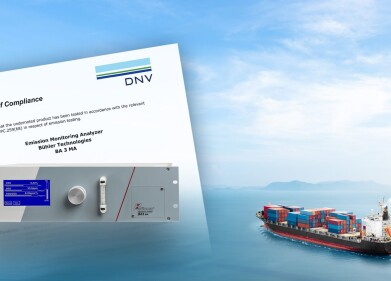Measurement and testing
What's the Point in ASTM D5185?
Aug 23 2022
From petroleum refineries and manufacturing plants to jumbo jets and passenger trains, oil analysis can offer invaluable insight into the health of engines and mechanical systems. Standardised tests like the ASTM D5185 allow analysts to detect dozens of elements that reveal issues such as mechanical wear and the presence of contaminants.
Onsite analysts and laboratory scientists around the world rely on the Standard Test Method for Multielement Determination of Used and Unused Lubricating Oils and Base Oils by Inductively Coupled Plasma Atomic Emission Spectrometry (ICP-AES). Results are used to detect and quantify elements such as iron, copper, chromium, calcium, potassium, phosphorus, silicon and zinc in lubricating oils.
The core principle of ASTM D5185
ASTM D5185 is based on the principle that mechanical components release tiny particles as they wear. Most are less than 10 microns in size and invisible to the naked eye. Techniques such as ICP-AES are used to detect and quantify these particles in lubricating oils and greases. Unusually high concentrations are generally a red flag that abnormal wear is occurring within the engine or mechanical system.
As well as being reliable and accurate, ICP-AES is a highly reproducible technique. This makes it useful for trend analysis, which allows operators to continuously monitor elemental concentrations and detect abnormal deviations.
The backbone of Spectroscopic Oil Analysis Programs
ICP-AES often forms the backbone of Spectroscopic Oil Analysis Programs (SOAPs). These programs are used to monitor the health of lubricated engines and mechanical systems. Frequent testing using the ASTM D5185 reveals the presence of elements in samples and allows operators to detect metallic particles suspended in lubrication systems.
As well as detecting elements that indicate mechanical wear, the ASTM D5185 can be used to detect contaminants absorbed from the external environment. For example, contaminants such as dirt contain signature elements such as silicon (Si) and aluminium (Al). Similarly, liquid coolants can be identified using tell-tale elements like sodium (Na) and potassium (K). ICP-AES is a useful way to detect these contaminants in lubricated systems. Operators can then identify the root cause and take action before major damage or downtime occurs.
A closer look at ICP-AES
To understand the core principles of ASTM D5185, it’s important to know more about how ICP-AES works. The method is a form of emission spectroscopy that uses plasma to excite atoms and ions. This forces them to release electromagnetic radiation. Wavelengths are used to identify individual elements and calculate mass percentages.
ASTM D5185 is one of hundreds of different petroleum testing methods used in the oil industry. Find out more about other methods, including the ASTM D287-12b for API Gravity and the ASTM D2887-19ae2 for boiling range distribution, in ‘Petroleum Testing - A Comprehensive Guide’. Or check out 'Recent advances in testing the lubricity of diesel fuel' for a more in-depth look at lubricity testing in particular.
Digital Edition
PIN 26.1 Feb/Mar 2025
March 2025
Analytical Instrumentation - Elemental Analysis for Quality and Process Control at Refineries, for Lubricants and Wear Metals in Engine Oils - Synthetic Lubricants: New Developments - Scaling...
View all digital editions
Events
Apr 08 2025 Birmingham, UK
Apr 08 2025 Kielce, Poland
Apr 08 2025 Ravenna, Italy
Apr 08 2025 Southampton, UK
Apr 08 2025 London, UK



















